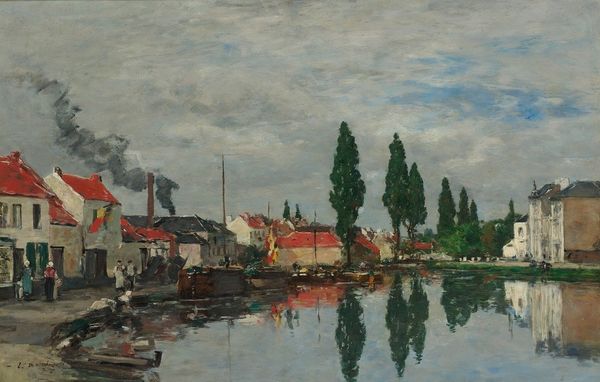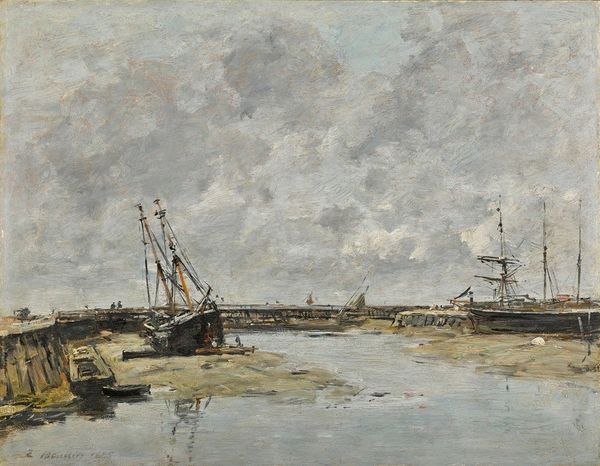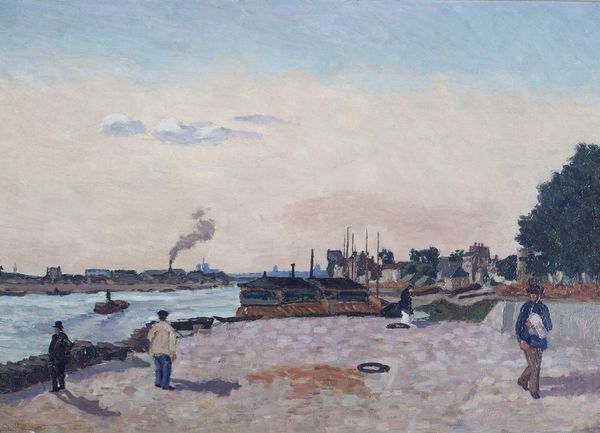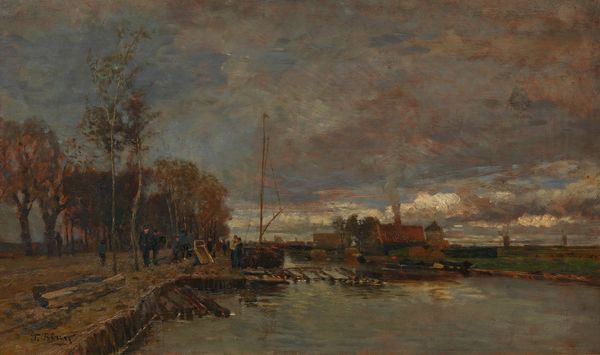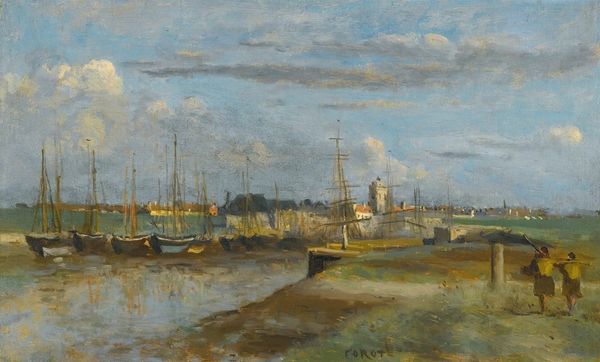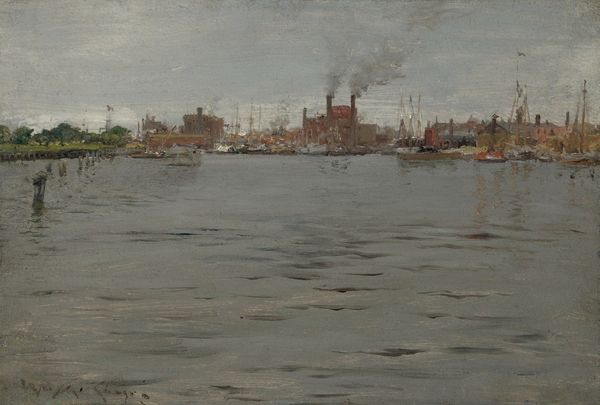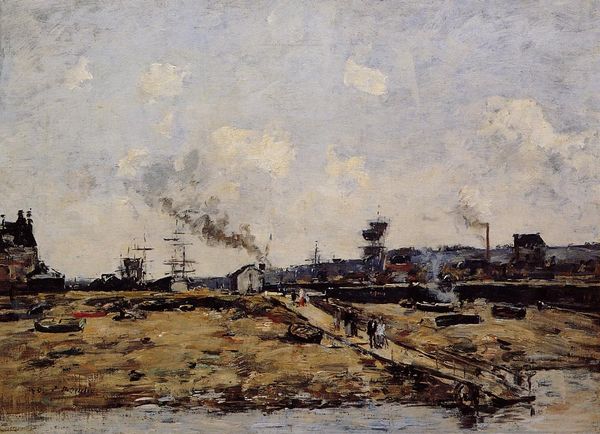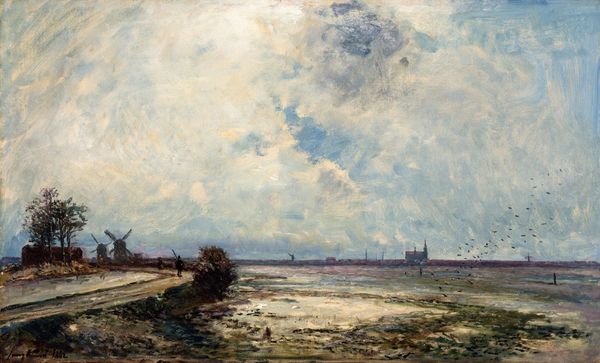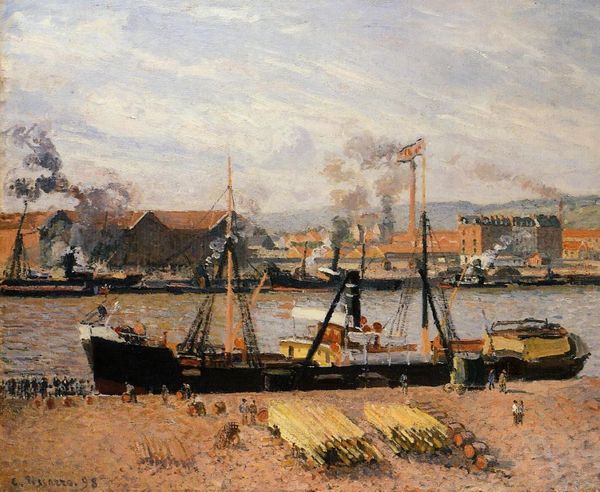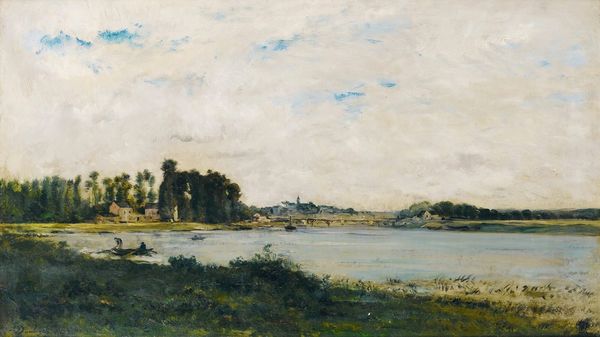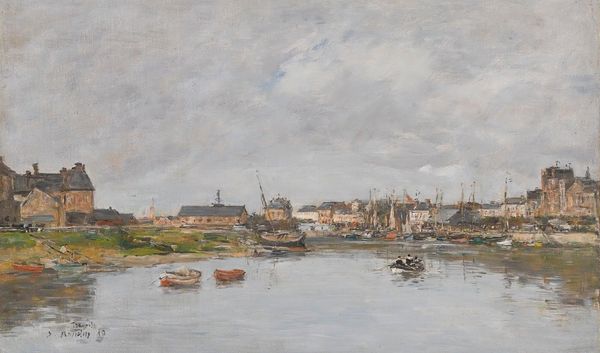
Copyright: Public Domain: Artvee
Editor: So, here we have Eugène Boudin's "La Retenue à Trouville," painted in 1894, using oil paints. It’s remarkably hazy. The muted tones create such a still atmosphere. How do you interpret this work? Curator: Boudin captures a specific atmosphere through color, certainly. Note the plume of smoke, repeated in reflection on the water, that draws your eye. For me, smoke often acts as a potent symbol, signifying change and the transient nature of modern life and its intersection with the more constant imagery of maritime life. Do you see how it interplays with the boats and buildings? Editor: Yes, there is a dialogue. It seems industrialization, and the shipping industry, are meeting the local environment and its communities. What else does that juxtaposition suggest to you? Curator: Think about Trouville’s cultural memory, especially at the fin de siècle. It was developing rapidly, attracting tourists while sustaining working docks. Boudin captures that meeting of leisure and labour. And light—his paintings capture fleeting atmospheric effects. Light almost becomes a character here, and reminds us of time's effect on places and cultures. Does the location impact your interpretation? Editor: It really does. It is quite poignant knowing that Boudin tried to record not just the scenery but also, through the water and sky, the shifting feeling of the town and time itself. Curator: Exactly. And that feeling connects us, over a century later, to that specific moment of change. Visual symbols link us to the cultural memory of this French harbor, still felt through the image. Editor: It's amazing to think a painting can be such a time capsule, carrying so many layers of meaning. Curator: Precisely. We are now carriers too!
Comments
No comments
Be the first to comment and join the conversation on the ultimate creative platform.
